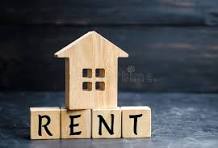In today’s high-cost housing market, especially across the UK, buying property solo can feel out of reach — especially for first-time buyers. That’s why more people are considering buying a home with a partner, friend, or even a sibling as a way to get on the property ladder faster.
But while co-buying can be a smart strategy, it’s not without its challenges.
Here's a breakdown of the pros and cons of buying property with someone else, so you can make an informed decision.
One of the biggest advantages is splitting the financial burden:
Result? More affordability and financial breathing space.
With soaring property prices, buying with someone else can be your ticket into the housing market sooner — especially in high-demand cities like London, Manchester, or Birmingham.
Pooling resources can help you buy in a better location or higher-value property, which could result in greater capital growth over time. It may also open up opportunities to:
Buying a home is stressful — but sharing that journey with someone can ease the pressure. You’ll have:
When two names are on a mortgage or deed, things can get legally tricky, especially if:
Solution: Always set up a Declaration of Trust or Cohabitation Agreement to define who owns what and how things will be handled if the situation changes.
Whether you're buying with a romantic partner or a friend, relationships can change. Breakups, disagreements, or life changes (like moving abroad or changing jobs) can seriously impact your co-ownership.
If one of you can’t make payments, both parties are affected — because you're jointly liable for the mortgage. Missed payments will damage both credit scores, regardless of who caused the problem.
What happens if one person contributes more to the deposit or pays more towards renovations? Without a clear legal agreement, it can be difficult to reclaim your share if the property is sold later.
If you decide to go your separate ways, selling or refinancing can be complicated:
Before signing anything, get legal and financial advice. Make sure you understand your rights, responsibilities, and exit strategy.
Buying property with a partner or friend can be a smart and empowering move — but only if done with clear communication and proper legal planning. It opens doors to the property ladder and investment opportunities, but it requires mutual trust, transparency, and a shared vision.
At Nectar Estates, we help buyers understand their options, connect with experienced advisors, and find the right property for joint ownership.
Contact us today for expert guidance and personalized support.

Property investment is one of the most effective ways to build long-term wealth. With the right strategy, real estate can provide a steady income, capital appreciation, and financial security. Whether you're a beginner or an experienced investor, this guide will help you maximize your property investments for lasting wealth.
1. Understand the Real Estate Market
Before investing, research market trends, property values, and economic factors that impact real estate. Consider:
2. Choose the Right Investment Strategy
There are several ways to invest in real estate, including:
3. Secure Financing Smartly
4. Location Matters
Choosing the right location is key to maximizing returns. Look for:
5. Maximize Rental Income
6. Minimize Costs and Risks
7. Build Long-Term Equity
8. Stay Informed and Adapt
Building wealth through property investment requires careful planning, smart financing, and continuous market awareness. By making informed decisions and leveraging the right strategies, you can create sustainable financial growth and long-term security.
Ready to start your property investment journey? Contact us for expert advice and tailored investment opportunities!
Is Buy-to-Let Still a Good Investment in 2025?

The UK property market has long been a popular choice for investors, with buy-to-let offering a potential source of passive income and long-term capital appreciation. However, with evolving regulations, fluctuating interest rates, and shifting market conditions, is buy-to-let still a good investment in 2025? Let’s explore the key factors affecting this decision.
As we move through 2025, the UK property market remains competitive. House prices have shown steady growth in many regions, but rising mortgage rates and increasing landlord regulations have made buy-to-let a more challenging venture than in previous years.
With housing shortages and affordability issues preventing many from buying homes, rental demand continues to be strong, particularly in major cities and university towns.
Despite short-term market fluctuations, UK property has historically appreciated over time. Investing in the right location could yield significant long-term returns.
A well-managed buy-to-let property can provide consistent monthly income, helping investors build wealth over time.
Property investment allows investors to diversify their portfolios beyond stocks and shares, offering a tangible asset with potential for both rental income and capital appreciation.
Mortgage rates have increased in recent years, making borrowing more expensive and reducing profit margins for landlords.
Government policies continue to place pressure on landlords, including changes in taxation, energy efficiency requirements, and stricter tenant protection laws.
Landlords must cover ongoing maintenance, repairs, and compliance with legal requirements, which can eat into profits.
Economic changes, shifts in property values, and potential legislative changes can make buy-to-let investment less predictable than before.
Buy-to-let in 2025 remains a viable investment for those who conduct thorough research and adopt a strategic approach. While rising costs and regulations pose challenges, high rental demand and long-term property appreciation can still make it a rewarding venture. Investors should carefully assess their financial situation and market trends before making a decision.
If you're considering buy-to-let, consulting a financial advisor or property expert can help you navigate the complexities of the market and make an informed investment choice.

Buying a home is one of the most significant financial decisions you'll ever make, and securing the right mortgage is crucial to making that dream a reality. With so many options available, understanding the different types of home loans and how they work can help you make an informed choice. Let’s break it down.
A mortgage is a loan provided by a lender to help you purchase a property. You repay the loan in monthly installments over a set period, typically 15 to 30 years, with interest. If you fail to make payments, the lender has the right to take ownership of the property.
A fixed-rate mortgage offers a consistent interest rate and monthly payments throughout the loan term. This stability makes budgeting easier and is ideal for homeowners who plan to stay in their homes for a long time.
An ARM has an interest rate that changes periodically, typically after an initial fixed period (e.g., 5, 7, or 10 years). While ARMs often start with lower interest rates than fixed-rate mortgages, they can fluctuate, leading to potentially higher payments.
With this type of mortgage, you pay only the interest for a set period (usually 5–10 years), after which you start paying both principal and interest. This option can provide lower initial payments but may result in higher costs in the long run.
Finding the right home loan is about balancing affordability, risk, and future plans. Take your time to research, compare lenders, and seek advice from mortgage professionals. With the right mortgage, homeownership can be a financially rewarding and fulfilling journey.
Understanding Tenant Rights and Responsibilities in the UK
Renting a property in the UK comes with both rights and responsibilities for tenants. Understanding these can help ensure a smooth and fair rental experience. Here’s what you need to know.
Landlords are legally required to provide a property that is safe, well-maintained, and meets health and safety standards. This includes ensuring proper heating, sanitation, and structural integrity.
A landlord cannot evict a tenant without following the proper legal process. Most tenants have protection under the Housing Act 1988, meaning landlords must provide valid notice and obtain a court order if necessary.
If you rent an assured shorthold tenancy, your landlord must place your deposit in a government-approved tenancy deposit protection (TDP) scheme. This ensures fair handling and return of your deposit at the end of the tenancy.
Landlords cannot arbitrarily raise rent. Any increase must follow the terms of the tenancy agreement or be in line with fair market rates.
Your landlord must provide at least 24 hours’ notice before visiting the property for inspections or repairs, except in emergencies.
If you face issues like disrepair, unlawful eviction, or unfair fees, you can seek help from local councils, legal services, or tenants’ rights organizations.
Tenants must pay rent as agreed in their tenancy agreement. Late payments could result in eviction proceedings.
While landlords handle major repairs, tenants must keep the property clean, prevent damage, and report maintenance issues promptly.
Tenants must adhere to the terms of their lease, which may include restrictions on pets, smoking, and property modifications.
Tenants must allow landlords or agents access to the property for necessary inspections and repairs, provided proper notice is given.
Tenants should be considerate of neighbors and avoid excessive noise or disruptive behavior.
If a tenant decides to move out, they must provide the required notice as specified in the tenancy agreement.
Understanding your rights and responsibilities as a tenant can help you maintain a positive rental experience and avoid potential conflicts. If in doubt, seek legal advice or consult relevant housing authorities to ensure you’re fully informed.
Deciding whether to buy or rent a home is one of the biggest financial choices you’ll make. Each option has its advantages and disadvantages, depending on your financial situation, lifestyle, and long-term goals. Here’s a breakdown of the pros and cons to help you decide which is right for you.
Choosing whether to buy or rent depends on your financial situation, lifestyle preferences, and future plans. If you value stability and long-term investment, buying may be the right choice. However, if flexibility and lower upfront costs are your priority, renting might be the better option. Consider your goals and consult a financial expert to make the best decision for your circumstances.

Buying your first home is an exciting milestone, but it can also feel overwhelming. With numerous steps involved, understanding the process can help you navigate it with confidence. Here’s a step-by-step guide to buying your first home in the UK.
Before starting your property search, assess your financial situation. Consider your income, savings, monthly expenses, and any outstanding debts. Use a mortgage calculator to estimate how much you can afford to borrow and ensure you have enough savings for a deposit (typically 5-20% of the property price).
An Agreement in Principle (AIP) is a statement from a lender indicating how much they may be willing to lend you based on an initial assessment. Having an AIP can make you a more attractive buyer to sellers and estate agents.
Once you have a budget, begin searching for properties that meet your criteria. Consider factors such as location, transport links, local amenities, and future property value. Register with estate agents and use online property portals to explore available homes.
When you find a suitable property, submit an offer to the seller through the estate agent. Be prepared to negotiate on price based on the property’s condition and market value. Once your offer is accepted, you’ll need to move forward with the formal mortgage application.
With an accepted offer, you’ll need to submit a full mortgage application. Your lender will conduct affordability checks, credit assessments, and a property valuation to ensure the home is worth the loan amount.
A solicitor or conveyancer will handle the legal aspects of the purchase, including property searches, contracts, and transferring ownership. They will also check for any legal restrictions or issues with the property.
A property survey assesses the condition of the home and highlights any structural issues or repairs needed. Depending on the property type, you may choose a basic homebuyer’s report or a more detailed structural survey.
Once your solicitor is satisfied with the legal checks and mortgage approval, you will exchange contracts with the seller. At this point, you’ll pay the deposit, and the purchase becomes legally binding.
Completion usually happens a few weeks after exchanging contracts. On this day, the remaining funds are transferred to the seller, and you receive the keys to your new home.
Congratulations! You’re now a homeowner. Arrange for utilities, update your address with relevant institutions, and start making your new house a home.
Buying your first home in the UK requires careful planning and research. By following these steps and seeking professional advice when needed, you can ensure a smooth and successful home-buying journey.

Owning a rental property is a great investment, but simply collecting rent isn’t enough—you want to maximise your income while keeping expenses in check. Whether you're a seasoned landlord or just starting out, these strategies will help you boost your rental returns.
Charge for Additional Services
Maximise income by offering:
Parking spaces for rent (if applicable)
Storage solutions for tenants who need extra space
Cleaning or maintenance services for convenience
Work with a Lettings Expert
A real estate agency like Nectar Estates can help you:
Find high-quality tenants quickly
Handle contracts, rent collection, and legal compliance
Offer expert advice on market trends and pricing strategies
Final Thoughts
Maximising rental income isn't just about increasing rent—it’s about enhancing your property's value, reducing vacancies, and making strategic investments. By following these tips, you can improve profitability while keeping tenants happy.
Need help renting out your property? Contact Nectar Estates today!

The demand for rental properties is expected to rise in 2025, driven by various factors:
Investing in rental properties in high-demand areas can yield strong returns. Focus on regions experiencing economic growth or those with large student and young professional populations.
Nectar Estates can help investors identify prime locations and navigate the market efficiently. Read more about our expertise in property search and investment guidance in our previous blogs.
Build-to-rent developments are gaining traction as they cater to the expanding rental market. These properties often include amenities such as gyms, co-working spaces, and communal areas, appealing to younger renters.
Investing in build-to-rent projects or partnering with developers can be a lucrative option. These developments provide long-term rental income and cater to a growing tenant base.
Nectar Estates has extensive experience in sourcing and advising on build-to-rent opportunities. Learn more about our investment strategies in our past articles.
Eco-friendly and energy-efficient properties are increasingly desirable. Rising energy costs and government incentives for green homes mean tenants are prioritizing properties with lower utility bills and a smaller carbon footprint.
Look for properties with energy-efficient features or plan to upgrade your investments with solar panels, insulation, and smart home technologies. These upgrades can enhance property value and attract sustainability-conscious tenants.
The popularity of short lets, driven by platforms like Airbnb, is expected to grow in 2025, particularly in tourist-heavy areas and cities hosting major events. For how we can support with short lets, see more information here
Short-let properties in prime locations can generate higher rental yields. However, be mindful of local regulations and seasonal demand fluctuations.
Nectar Estates can assist buyers in identifying short-let investment opportunities and navigating regulatory requirements. Read our latest insights on maximizing rental yields.
Several government policies will shape the rental market in 2025. See our blog here for more information on this
Staying updated on policy changes is crucial for adapting investment strategies. Working with a knowledgeable real estate agency like Nectar Estates ensures you remain compliant and well-informed about legislative shifts.
The rental market is embracing technology to streamline processes. From virtual property tours to digital lease agreements, tech adoption is enhancing the renting experience for both landlords and tenants.
Properties with smart home features or those listed on tech-friendly platforms are likely to attract tech-savvy tenants. Leveraging digital tools can also improve property management efficiency.
While London remains a prime rental market, regional cities like Leeds, Bristol, and Edinburgh are experiencing rising rental yields. These areas offer more affordable entry points for buyers and strong tenant demand.
Diversify your portfolio by exploring regional markets with growth potential. Properties in these areas can offer better ROI compared to high-priced urban centers.
The UK rental market in 2025 presents exciting opportunities for buyers. By understanding trends such as increased demand, the rise of build-to-rent, and the impact of sustainability, you can make strategic investments that align with market needs. Whether you’re new to property investment or expanding your portfolio, Nectar Estates is here to guide you every step of the way.
Contact us today to explore the best rental market opportunities for 2025 and learn more about our tailored investment strategies.

Rental Expectations in 2025: What Tenants Are Looking For
In 2025, renters are more informed, tech-savvy, and selective than ever before. At Nectar Estates, we leverage our industry expertise to help landlords adapt to these evolving demands, ensuring high occupancy rates and satisfied tenants. Meeting their expectations can mean the difference between long-term tenancy and prolonged vacancies. For landlords and property managers, understanding these evolving priorities is essential to maintaining high occupancy rates and attracting quality tenants. Here’s what tenants are prioritizing in 2025 and how landlords can stay ahead of the curve.
Environmental consciousness is driving tenant preferences, with studies indicating that over 60% of renters now prioritize energy-efficient and sustainable living spaces. Properties that align with these values are in high demand, as eco-conscious tenants seek ways to reduce their carbon footprint while lowering utility costs.
Landlord Strategy: Highlight sustainability initiatives in property listings and invest in energy-efficient upgrades to appeal to environmentally conscious tenants.
The rise of remote work and digital lifestyles makes connectivity a top priority.
Landlord Strategy: Partner with reliable broadband providers and consider offering pre-installed smart home technology to differentiate your properties.
Tenants seek convenience and contemporary design in their living spaces.
Landlord Strategy: Focus on upgrading kitchens and bathrooms, and highlight storage options in listings to attract modern renters.
With more renters owning pets, accommodating them can expand the tenant pool and lead to financial benefits for landlords. Studies show that pet-friendly properties often command higher rents and lower vacancy rates, with tenants willing to pay additional deposits or pet fees for suitable accommodations.
Landlord Strategy: Implement a pet-friendly policy with reasonable deposit requirements to increase property appeal.
Location remains a key factor in tenant decisions.
Landlord Strategy: Highlight nearby amenities in marketing materials and consider offering information on local transport connections to prospective tenants.
Security is non-negotiable for renters.
Landlord Strategy: Invest in security enhancements and promote the safety of the neighborhood in property listings.
Modern tenants value flexibility, especially in uncertain economic conditions.
Landlord Strategy: Offer flexible lease options to accommodate changing tenant needs.
A well-kept property signals a responsible landlord. At Nectar Estates, we assist landlords with routine inspections, property maintenance services, and access to trusted contractors, ensuring their properties remain in top condition and attract high-quality tenants.
Landlord Strategy: Invest in routine maintenance and ensure properties are in top condition before viewings.
With rising living costs, tenants are more cost-conscious than ever.
Landlord Strategy: Be upfront about costs and consider including incentives such as reduced deposits or utility packages.
A sense of community enhances tenant satisfaction and retention.
Landlord Strategy: Foster a community-oriented atmosphere by promoting shared amenities and organizing occasional tenant engagement events.
Tenant expectations in 2025 are shaped by modern lifestyles, environmental awareness, and a focus on convenience and comfort. At Nectar Estates, we work closely with landlords to implement these insights, offering tailored solutions that enhance property appeal, optimize rental value, and ensure long-term tenant satisfaction. By understanding these priorities and adapting to market demands, landlords can attract high-quality tenants and ensure long-term success.
At Nectar Estates, we specialize in connecting renters with properties that meet their needs while helping landlords maximize their investment potential. Contact us today to discover how our expertise can keep you ahead in the rental market.
Further Reading: Check out our previous blogs on Market Trends for 2025 and Landlord Strategies for Maximizing Returns to gain deeper insights into the evolving rental landscape.